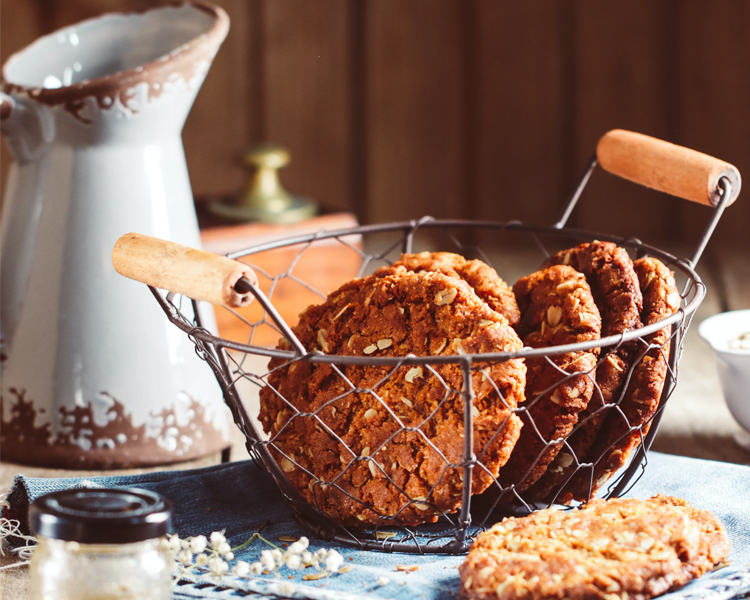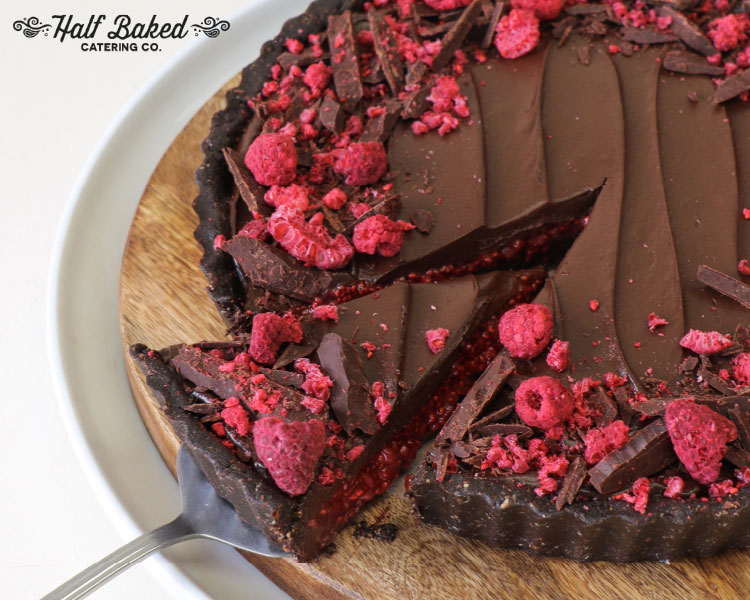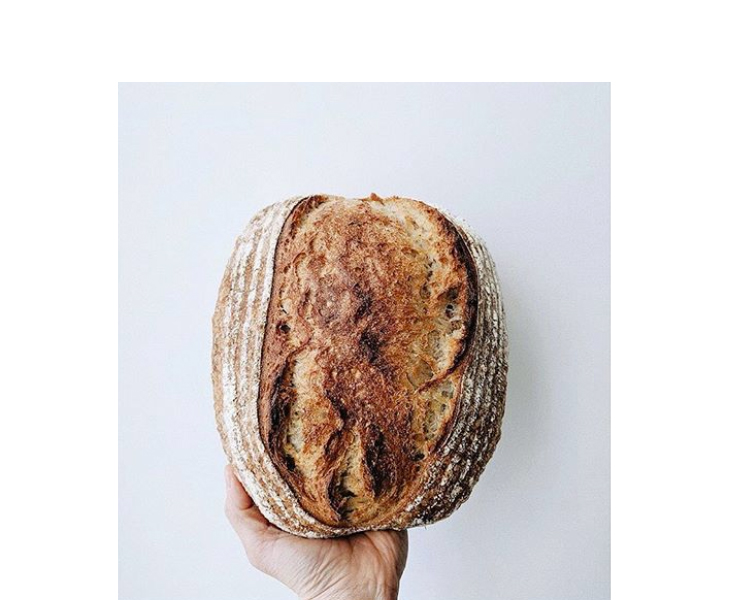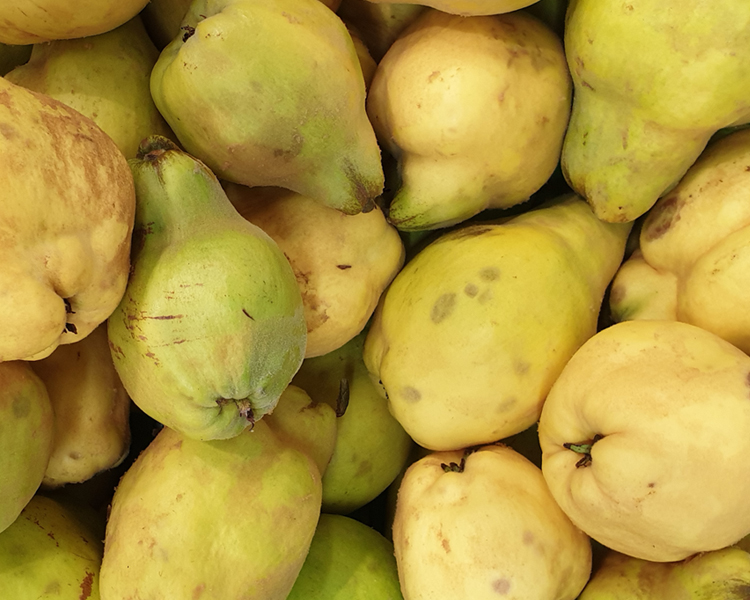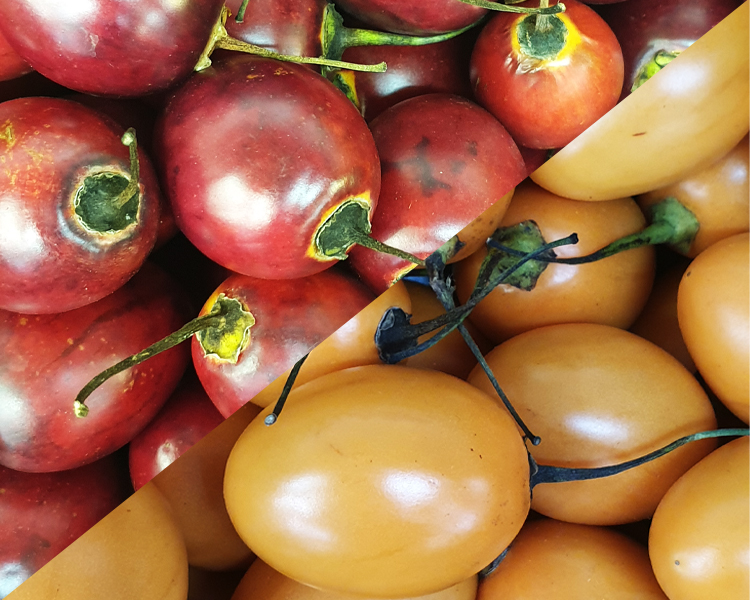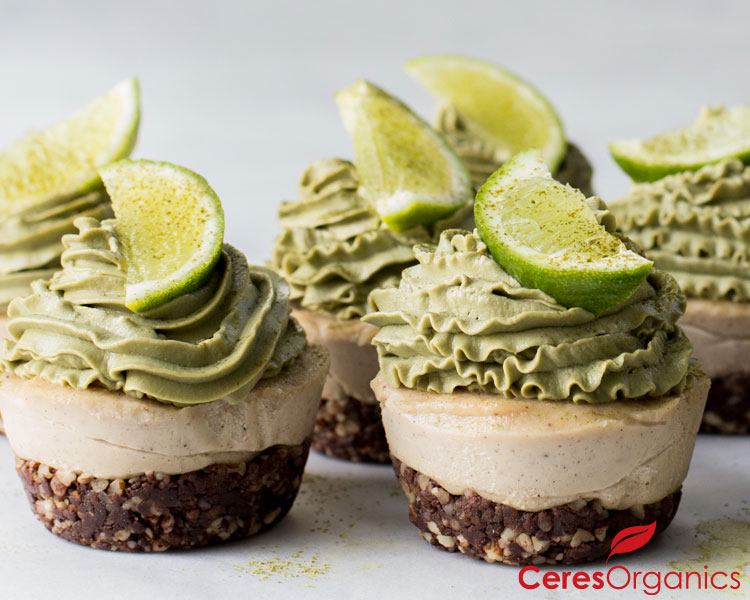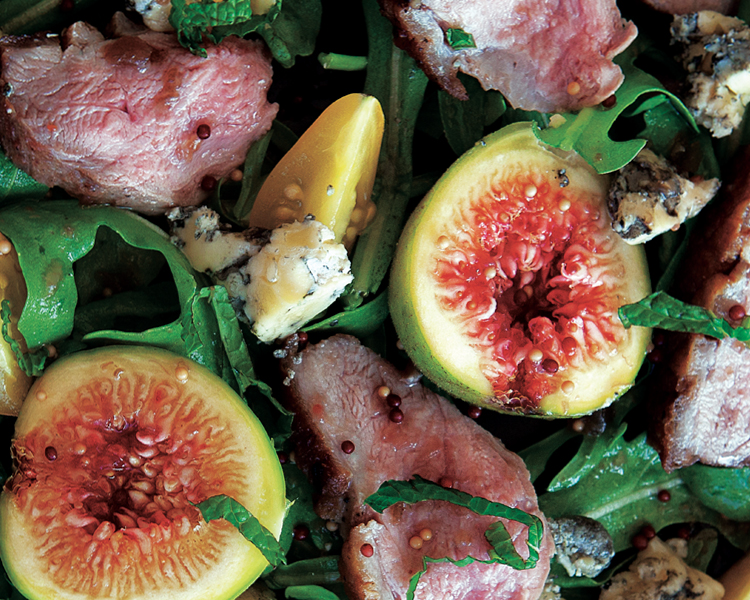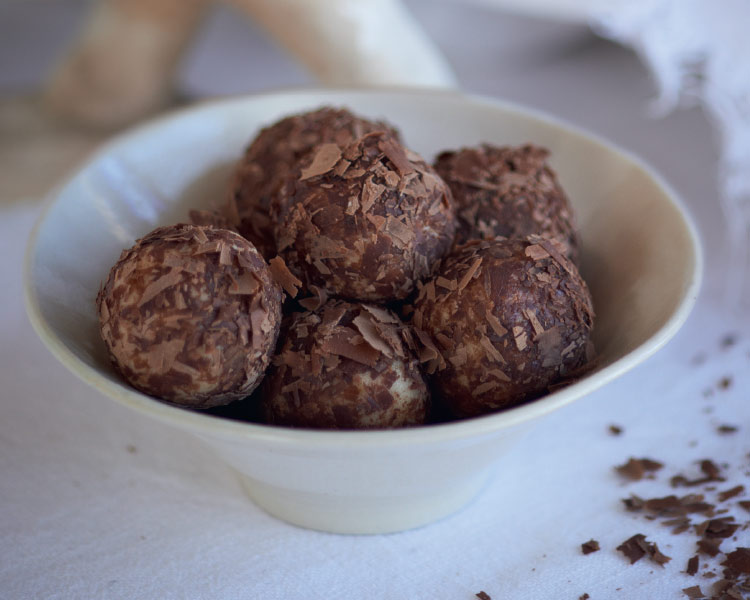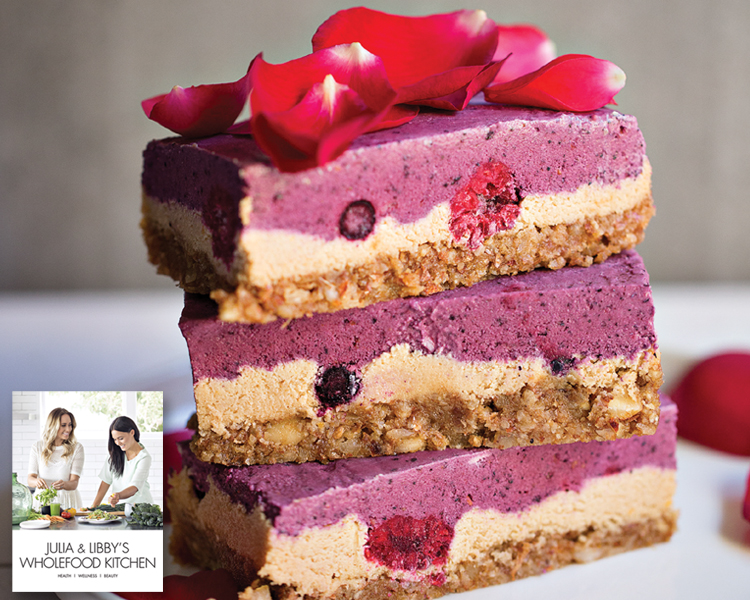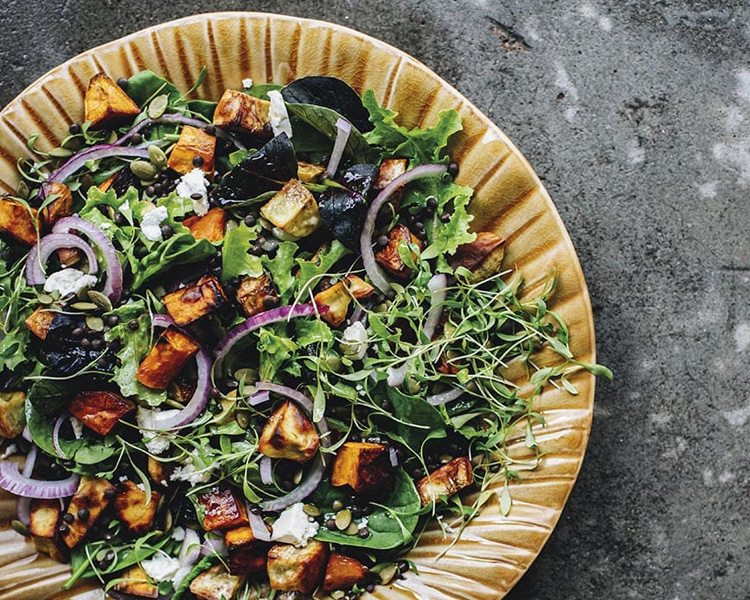This recipe is from the Edmonds Cookery book. You can find the book instore or online.
Baking
-
-

Recipe shared by Zara and Shinee McIntyre for Moore Wilson's 2020 Calendar.Half Baked Catering Co
Made in Tawa. Sold in Moore Wilson's Fresh and select cafes.
Find them on FacebookWellington sisters Zara and Shinee McIntyre have a passion for creating vegan, gluten and refined sugar free sweet treats! Here is one of their favourite recipes.
-
Sourdough is a type of bread made without commercial yeast, and instead uses a natural culture from flour and water called a ‘starter’. When flour and water are mixed lactobacilli bacteria combine with the wild, airborne yeast in the surrounding environment and that mixture ferments and produces gas. When added to bread dough, this mixture is what makes the bread rise and offers the bread a complex flavour and smell – tangy and acidic.
Sourdough bread can be traced back to Ancient Egyptian civilisations from where it gradually spread throughout Europe and the Middle East and it wasn’t until the 1800’s when it was introduced to America. Current day, many artisan bakers are experimenting with textures and flavours and producing delicious and nutritious sourdough bread.
The fermentation process of sourdough bread makes it easier to digest that standard, yeasted loaves of bread. The phytic acid in the wheat inhibits enzymes which are needed for our bodies to breakdown the proteins and starch in bread. The lactobacilli and wild yeast found in sourdough neutralise the phytic acid while the dough slowly ferments which enables us to more easily digest sourdough bread. This process also makes other nutrients available to us including calcium, magnesium, iron and zinc.
You can easily make sourdough bread at home with only a few simple ingredients – flour, water, salt and sourdough starter. Sourdough starters can be made from scratch and takes around 7-10 days. Some bakeries also offer people some of their own starter which can be used to make bread straight away.
There are many sourdough bread recipes found online as well as many recipe books. Some recommended books are:
The Tivoli Road Baker, by Michael James with Pippa James – available here
Tartine Bread, By Chad Robertson
The Sourdough School, by Vanessa Kimbell
Moore Wilson’s Fresh also stock a range of sourdough bread from local bakeries including:
-
Quince is a fruit native to Iran and Turkey and now commonly found in Europe. It is particularly popular in Middle Eastern, Spanish and French cuisine. Its appearance is similar to a pear and apple in both size and shape but a little lumpy. The colour of the skin is yellow and can sometimes have fuzz over it, while the flesh is white when raw and goes pink once cooked. Quince have a delicate vanilla, citrus, floral fragrance. They can be eaten raw but are very hard and astringent, however once cooked they soften and become delicate and sweet in flavour.
Quince are a good source of vitamins and minerals including Vitamin C, fibre, zinc, copper, iron, phosphorus and potassium.
Choose hard fruit that are green/yellow in colour and firm with no soft spots or bruises. You can store them on the bench top until their fragrance becomes quite strong or in the fridge for up to two weeks. Quince can be eaten both peeled and unpeeled. If unpeeled, rub off the fuzz and wash before cooking.
Quince can be used in a number of ways including roasting, stewed, baked and poached. They are very high in pectin which makes them great for making jelly, marmalade and jam. They are a delicious addition to sweet pies and crumbles and go well with meats such as lamb and pork. Quince are also delicious on their own as a simple dessert or with porridge or muesli.
RecipE - Poached Quince
7 cups (1.75l) water
1 cup (200g) sugar
1/2 cup (150g) honey
1 lemon, cut in half
1 vanilla bean, split lengthwise
6 large or 8 medium quince
- Mix the water, sugar, honey, lemon and vanilla bean in a large non-reactive pot and turn it on to medium-high heat. You can add any additional spices or seasonings if you wish.
- While the liquid is heating, quarter, peel, and remove the cores of the quince.
- Put the quince into the pot and cover with a lid
- Simmer the quince (do not boil) for at least an hour, until the quince are cooked through.
Cooking time will vary, depending on the quince. They’re done when they are cooked through, which you can verify by piercing one with the tip of a sharp paring knife. It’s not unusual for them to take up to 2 hours, or more.
Serve warm, or at room temperature. To store, pour the quince and their liquid into a storage container and refrigerate for up to one week. If you wish to eat only the fruit, you can save the liquid and drizzle it over ice cream or yoghurt or to flavour drinks.
-
Originally from South America, the tamarillo has thrived in New Zealand and we’ve almost adopted it as our own, even to the point of renaming it. The peak of availability in New Zealand is in July and August. Tamarillos are a relative of the potato, tomato and eggplant and are still called “tree tomatoes” in some other countries.
In NZ, tamarillos come in three varieties, red (the most common), amber and gold. Red tamarillos are great to eat raw, cooked or for decorating other food for your table - they look striking when sliced or cut in half. The amber and gold varieties are sweeter. Amber tamarillos are great as dessert toppings, while gold tamarillos make tasty chutneys and pickles.
Tamarillos rate very highly as a source of
vitamins, minerals and antioxidants when compared with other common fruits and vegetables. They are low in fat, high in potassium and are a source of Vitamin A, B6 and C.Look for fruit with full colouration. A slight yellowing of the stalk and softness of the fruit are signs of ripeness. Tamarillos will keep in the fridge for about two weeks, or one week in your fruit bowl - they can also be easily frozen. The full exotic flavour of the traditional fruit makes a great drink, snack, main course or dessert.
Uses for Tamarillos:
- Use as an ingredient in a stuffing for roast lamb
- Combine with apple in a variety of desserts such as crumble
- Serve on crackers with a sprinkling of salt
- Make a salsa with avocado, chilli and onion
- Add to casserole as you would tomatoes
- Halve tamarillos, top with garlic butter and grill
- Slice raw, peeled tamarillos and decorate flans, cakes, cheesecakes
- Pureed tamarillo makes an excellent marinade, adding flavour and tenderising meat
- Add to smoothies for a sweet and tangy breakfast or snack
RECIPES
Ginger Pork with Tamarillos and Kumara, courtesy of Lucy Corry
- 2 tbs olive oil
- 2 onions, peeled and finely chopped
- 4 cloves garlic, peeled and sliced
- 4cm piece of ginger, finely grated
- 500g diced pork
- 1/2 cup dry white wine
- 1 large kumara
- 1/4 cup water
- 4 tamarillos
- 3 handfuls of spinach leaves, roughly chopped
- Heat the oven to 150 degrees Celsius. Heat the olive oil in a large, heavy, ovenproof pot. Add the onions, garlic and ginger, along with a pinch of salt, and cook over medium heat for 5-10 minutes, until soft but not browned.
- Remove from the pot, add a drizzle more oil and raise the heat. Add the pork and brown on all sides.
- Return the onions to the pot, along with the wine. Let it bubble up, then add the kumara and water. Cover tightly and transfer to the oven. Cook for 30 minutes.
- While you're waiting, put the tamarillos in a heatproof bowl and cover with boiling water. Let stand for two minutes, then drain and peel off the skins. Slice thickly.
- When the pork has cooked for 30 minutes, add the tamarillos and spinach. Stir well and return to the oven for another 15-20 minutes. Serve with rice.
Tamarillo Dressing, courtesy of Nadia Lim
The tamarillos give that fruity tartness, like lemon, that all good dressings need. This dressing goes well with lots of different salads.
- 2 tamarillos, peeled and flesh diced
- 1/2 tsp Dijon or wholegrain mustard
- 1 1/2 tsp runny honey
- 1 1/2tbs extra-virgin olive oil
Place all ingredients into a small jar, screw on the lid and shake well to mix all ingredients together.
-
Matcha is a special variety of green tea, stoneground into a fine powder. Considered a “super food”, matcha is packed with antioxidants, the super chemical compound that prevents aging and several chronic diseases. One cup of Matcha is reported to have the nutritional value of up to 10 cups of regular green tea and over 100 x the antioxidants!
Matcha powder can be used in just about anything – smoothies, juices, desserts, or simply enjoyed as a nourishing tea or ‘latte’. Matcha adds a wonderful, natural colour to baking (or un-baking!) – as you’ll see with these beautiful mini cheesecakes.
Makes 10 | Ready in 45 minutes + freezing time.
-
Layer cakes are extra special and this version from Nicola Galloway's Homegrown Kitchen is sure to delight.
-
-
Deliciously decadent with a hint of hazelnut, these adults-only truffles make a wonderful homemade Easter gift. Makes 20 truffles.

